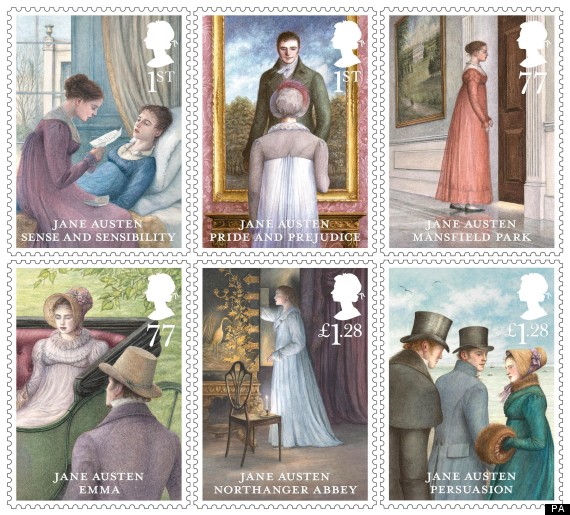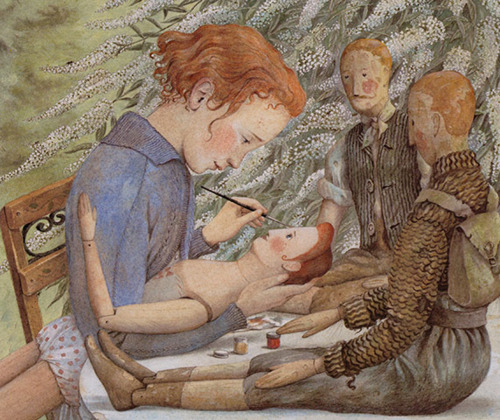I don’t venture into the world of Jane Austen commentary very much anymore, but did notice some talk about the new Jane Austen stamps released in the UK recently. You can read about them more extensively at Austenprose, where there are also larger versions of each individual one. They were illustrated by Angela Barrett.
Stamps are interesting in the way that they are designed to carry a lot of meaning, but are ephemeral and largely unlooked at in everyday use; and now mostly unused except for collectors. They tend to rely on cultural understandings, large national ones – here pride in JA as an English author – and also more smaller cultural pools – here what is at the heart of what the novels are about, drawing on people knowing the novels well enough to understand what the illustrator is referring to. It’s a lot for an artist to convey in one tiny square of paper!
I was surprised to see them described by a few people as awful. I rather like the sketchy softness alongside quite decorative details. I find myself coming back to look at them and thinking about how Barrett did them and what she picked out as the symbolic moment for each novel – not what I would choose necessarily, but I like her choices. A lot of thought went into them.
One thing that intrigues me is just how much meaning is implied in what initially – and this is perhaps what people were disliking – seem like pretty bland choices of scene and delivery. The Pride and Prejudice illustration seems bland and static but then we know what a revelation his smile was to Elizabeth and how it is a critical moment in her dawning sense of how wrong she has been about him; and the dominance/submissiveness in the picture seems part of her realisation. (Funny, in the light of one friend jokingly terming it the ‘JA blow job stamp’). The Mansfield Park drawing is quiet and still too, but you can see the warmth and light of family on the other side of the door (both attractive and terrifying), and see all Fanny’s tension in the way she is holding herself and clenching her fists. And again with Emma all the action is in her inward contemplation and shame. We know why and what’s going on in all these moments, without it being spelt out more. This seems rather like the novels themselves, apparently small time in context and lacking in action, but rich with internal observations, understandings and things not said.
I hadn’t heard of Angela Barrett before but the illustrations I saw on searching are wonderful. Here is another I liked of a doll/puppet maker at work:




